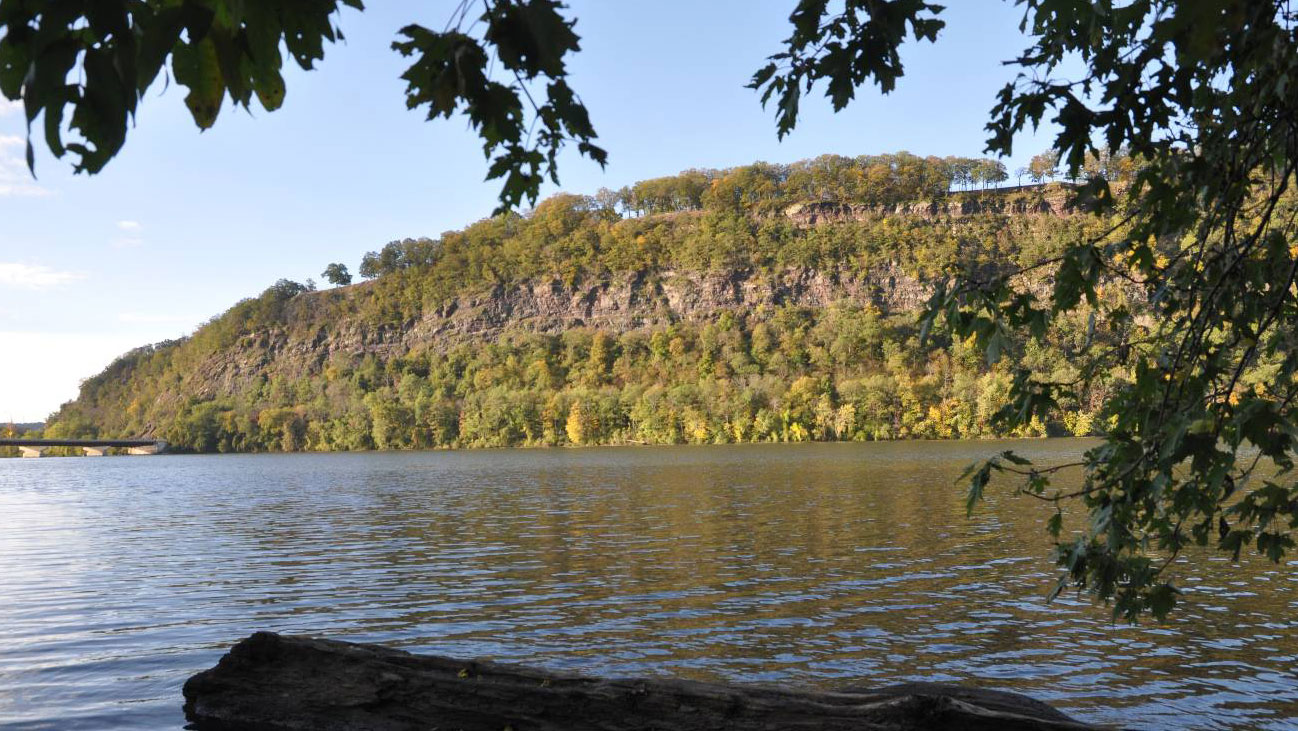Protecting Your Land
The primary mission of the Merrill Linn Conservancy is protection/preservation of the natural qualities of our local environment through partnerships with landowners. Landowners have several options available to them. The Linn Conservancy will assist in finding the best conservation tool for protecting your property according to your vision for its future.
Accomplishments in Conservation
The Merrill Linn Conservancy has protected 19 properties—1800 acres—within Union, Snyder, upper Northumberland and Lycoming counties through voluntary land protection/conservation partnerships with landowners. We have also assisted in the protection of many acres of farmland through referral to county Agricultural Preservation programs. Through purchase we have protected an additional 70 acres, including 36 acres that are now part of Shikellamy State Park.
Shikellamy Bluffs at Shikellamy State Park harbor at least two species of plants rarely found in Pennsylvania. Peregrine Falcons also nest along the cliffs. The Conservancy purchased 36 acres of the cliff face and turned possession of it to the PA State Park system. We were instrumental in assisting in the Park’s acquisition of 80 additional adjacent acres to protect woodlands and scenic views of and from the confluence of the West Branch Susquehanna with the River’s main stem.

Conservation Easements
Conservation easements are voluntary conveyances of rights between a landowner (donor) and a land trust (or other qualified organization) such as the Merrill Linn Land & Waterways Conservancy which is the holder of the easement. This conveyance of rights rides with the property deed in perpetuity and all owners, current and future, are bound by its terms. The donor, in negotiation with a potential holder, places restrictions on the use of the property, in order to protect the natural values of the land. Terms are tailored to meet a donor’s needs and vision for the future of the land. Donation of a conservation easement protects the land permanently while keeping it in private ownership. A conservation easement, held by a land trust, provides permanent protection of the natural values of the site. All rights and privileges for its use, except for the uses restricted under the easement, are available to current and future owners of the land.
Some federal tax advantages might be available to the landowner for placing his/her land under conservation easement protection. The landowner retains all other rights over the property including the right to sell, lease, transfer or mortgage. The landowner can use the land in any way that is consistent with the easement. An easement does not give the public the right to enter the property, unless the landowner specifically requests that this be allowed.
Conservation easements are designed to conserve forever the important resource values of each property. An easement may cover portions of the property or the entire parcel. It is legally binding on all future owners. The holder has a legal obligation to monitor the property to assure that all terms of the conservation easement are being adhered to and to take appropriate action to resolve any matters of concern.
Donation of Land
A donation of land to a land trust constitutes a charitable gift that is tax deductible at full fair market value. We will work with you to establish a vision and management plan for the property. While the conservancy can accept and retain ownership of land, it is not our goal to be a landowner. We might sell the land to a suitable government agency or to another private owner with a conservation easement in place to permanently protect the property according to the donor’s wishes. Proceeds from a sale can fund our long-term commitment to overseeing the property and/or enhance our ability to protect additional land.
Bargain Sale
In this case a landowner chooses to sell his/her land to a land trust for less than the determined fair market value. Some tax benefits might be credited to the landowner for the difference between the sale price and the fair market value while making the land affordable to the land trust.
How to Proceed
Bringing a land protection agreement that satisfies all parties to fruition can be a long and time consuming but rewarding process. We suggest that you reach out to our Conservation Coordinator at [email protected]. Upon receipt, a Conservancy representative will contact you to arrange a visit to the property site and to discuss details of our procedures with you.
At some point a formal appraisal will have to be made of your property and possibly a survey. Neither step should be taken prior to discussing the details of the entire process with Conservancy representatives. We encourage you to learn about and discuss land protection options with your tax and legal advisors and family members.
A helpful document illustrating a model easement document is available from the Pennsylvania Land Trust Association at conserveland.org. Once you get to the PaLTA site go to Model Documents then Model Conservation Easement. This document is frequently updated. Please note that numbers used in the document are only for illustration and are not representative of terms applicable to any specific site.

